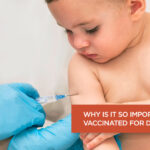Tetanus, caused by the neurotoxin-producing bacterium Clostridium tetani, remains a potentially fatal disease despite being entirely preventable. Characterized by painful muscle stiffness, spasms, and autonomic dysfunction, tetanus can lead to prolonged hospitalization or death without timely intervention. As the bacterium is widely present in soil and environments contaminated with animal feces, prevention through vaccination and proper wound care remains the most effective and essential public health strategy.

The Tetanus Vaccine: Core Defense Against Infection
Vaccine Types and Their Components
Tetanus immunization is administered as part of combination vaccines:
- DTaP (Diphtheria, Tetanus, and acellular Pertussis) for children under 7 years
- Tdap (Tetanus, reduced Diphtheria, and acellular Pertussis) for older children and adults
- Td (Tetanus and reduced Diphtheria) for booster doses
Tetanus Immunization Schedule
| Age Group | Vaccine Type | Dose Timing |
|---|---|---|
| 2 months to 6 years | DTaP | 5 doses at 2, 4, 6, 15–18 months, and 4–6 years |
| 11–12 years | Tdap | Single dose |
| Adults (every 10 years) | Td or Tdap | Booster every 10 years or after high-risk injury |
Booster shots are vital as immunity wanes over time. Tdap is preferred at least once in adulthood to ensure pertussis protection as well.
Wound Management and Post-Exposure Prophylaxis
Assessing Wound Risk
Wounds are evaluated based on contamination and depth. Clean, minor wounds carry low risk, while puncture wounds, avulsions, burns, and crush injuries are high-risk for C. tetani contamination.
Prophylaxis Guidelines Based on Immunization History
| Wound Type | Vaccination Status | Recommended Action |
|---|---|---|
| Clean, minor | ≥3 doses | Td if >10 years since last dose |
| All other wounds | ≥3 doses | Td if >5 years since last dose |
| Any wound | <3 doses or unknown | TIG + Td or Tdap |
Tetanus Immune Globulin (TIG) is administered in cases where prior vaccination is inadequate or uncertain, delivering immediate passive immunity.
Special Considerations for Vulnerable Populations
Neonates and Maternal Immunization
Neonatal tetanus remains a threat in areas with low maternal vaccination rates and non-sterile birth practices. Immunization of pregnant women with Tdap during the third trimester (27–36 weeks) protects newborns by transferring maternal antibodies.
Immunocompromised Individuals
People with immune disorders may have suboptimal vaccine responses. Though not contraindicated, additional monitoring or antibody titer testing may be necessary to ensure effective protection.
Environmental and Occupational Preventive Measures
Personal Protection and Hygiene
- Wear protective gloves when working with soil, especially around manure
- Clean wounds promptly using antiseptic solutions
- Seek medical advice for puncture wounds, lacerations, or burns
Occupational Risk Management
Professions at higher risk (e.g., agriculture, construction, military, emergency responders) should ensure:
- Up-to-date vaccination records
- Workplace first-aid protocols include tetanus prophylaxis
- On-site access to emergency tetanus care
Global Tetanus Eradication Initiatives
WHO and UNICEF Campaigns
Global health organizations continue campaigns to eliminate maternal and neonatal tetanus (MNT) in endemic regions by:
- Enhancing maternal vaccination programs
- Promoting sterile birthing practices
- Conducting outreach and education in underserved communities
As of the latest data, over 50 countries have successfully eliminated MNT, with continued focus on sub-Saharan Africa and parts of South Asia.
Immunization Coverage and Public Health Surveillance
Coverage Targets
WHO recommends at least 90% national coverage with DTP3 (third dose of diphtheria-tetanus-pertussis) vaccines and 80% in every district.
Monitoring Antibody Levels
While routine titer testing is not required for the general population, it is beneficial for:
- Healthcare workers
- Laboratory personnel
- Travelers to endemic regions
Achieving Lifelong Protection Through Proactive Tetanus Prevention
Tetanus prevention is an attainable public health goal, rooted in consistent immunization, timely boosters, and rigorous wound care protocols. By ensuring comprehensive coverage across all age groups and maintaining awareness of proper post-exposure measures, we can eliminate the threat of this preventable yet deadly disease. A unified approach from individuals, healthcare providers, and public health authorities is crucial in sustaining tetanus control and achieving eradication in high-risk regions.

